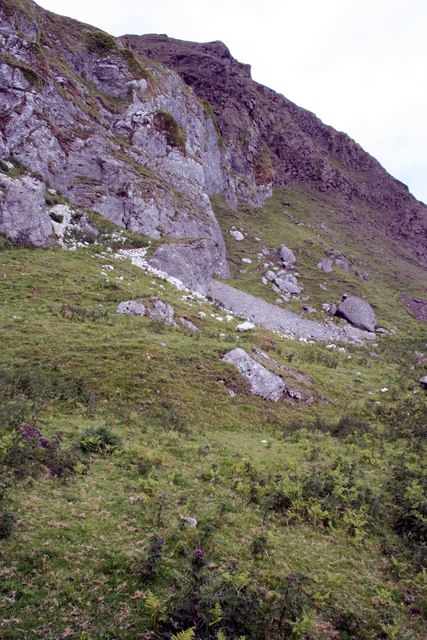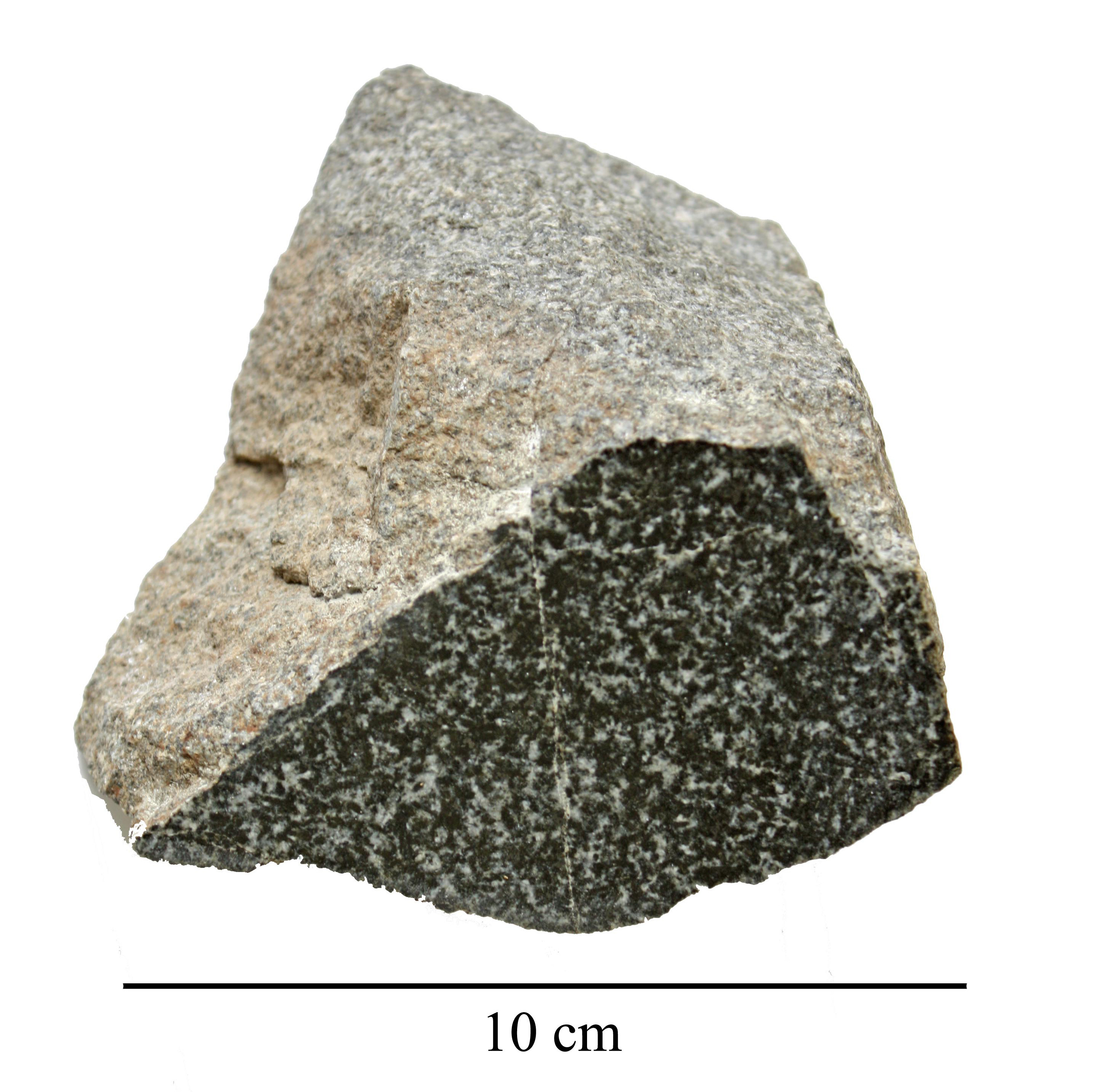|
Scawt Hill
Scawt Hill is a volcanic plug in County Antrim, Northern Ireland, in the borough of Larne, 5 km from the village of Ballygally. It gets its name from the Ulster Scots "" meaning scaly, scabby or rugged. Alternatively, '' 'scawt' '' meaning scruffy and contemptible, and when applied to rocks, covered in barnacles. Discovery of minerals Scawt Hill is notable for being the type locality for several hydrated calcium silicates, that is, the place where they were first identified. These minerals were formed when the existing chalk of the area was intensely altered by the intrusion of the feeder tube of an ancient volcano, now long since cooled and eroded to its roots.Wilson, H E et al (1986) Geological Survey of Northern Ireland, HMSO Minerals that were first discovered at Scawt Hill: * Larnite (''calcium orthosilicate'') a natural form of belite discovered in 1929 and named after Larne, the nearest town * Scawtite in 1929 * Portlandite in 1933 * Hydrocalumite in 1934 * Rank ... [...More Info...] [...Related Items...] OR: [Wikipedia] [Google] [Baidu] |
County Antrim
County Antrim (named after the town of Antrim, County Antrim, Antrim, ) is one of the six counties of Northern Ireland, located within the historic Provinces of Ireland, province of Ulster. Adjoined to the north-east shore of Lough Neagh, the county covers an area of and has a population of 651,321, as of the 2021 United Kingdom census, 2021 census. County Antrim has a population density of 211 people per square kilometre or 546 people per square mile. It is also one of the thirty-two traditional Counties of Ireland, counties of Ireland. The Glens of Antrim offer isolated rugged landscapes, the Giant's Causeway is a unique landscape and a UNESCO World Heritage Site, Bushmills, County Antrim, Bushmills produces whiskey, and Portrush is a popular seaside resort and night-life area. The majority of Belfast, the capital city of Northern Ireland, is in County Antrim, with the remainder being in County Down. According to the United Kingdom Census 2001, 2001, United Kingdom Census 20 ... [...More Info...] [...Related Items...] OR: [Wikipedia] [Google] [Baidu] |
Belite
Belite is an industrial mineral important in Portland cement manufacture. Its main constituent is dicalcium silicate, Ca2SiO4, sometimes formulated as 2 CaO · SiO2, SiO2 (C2S in cement chemist notation). Etymology The name was given by Alfred Elis Törnebohm in 1897 to a crystal identified in microscopic investigation of Portland cement. Belite is a name in common use in the cement industry, but is not a recognised mineral name. It occurs naturally as the mineral larnite, the name being derived from Larne, Northern Ireland, the closest town to Scawt Hill where it was discovered. Composition and structure The belite found in Portland cement differs in composition from pure dicalcium silicate. It is a solid solution and contains minor amounts of other oxides besides CaO and SiO2. A typical composition:Taylor H.F.W. (1990), ''Cement Chemistry'', Academic Press, 1990, , pp. 10-11. Based on this, the formula can be expressed as Ca1.94Mg0.02Na0.01K0.03Fe0.02Al0.07Si0.90P0.01O ... [...More Info...] [...Related Items...] OR: [Wikipedia] [Google] [Baidu] |
Metamorphism
Metamorphism is the transformation of existing Rock (geology), rock (the protolith) to rock with a different mineral composition or Texture (geology), texture. Metamorphism takes place at temperatures in excess of , and often also at elevated pressure or in the presence of chemically active fluids, but the rock remains mostly solid during the transformation. Metamorphism is distinct from weathering or diagenesis, which are changes that take place at or just beneath Earth's surface. Various forms of metamorphism exist, including Regional metamorphism, regional, Contact metamorphism, contact, Hydrothermal metamorphism, hydrothermal, Shock metamorphism, shock, and Dynamic metamorphism, dynamic metamorphism. These differ in the characteristic temperatures, pressures, and rate at which they take place and in the extent to which reactive fluids are involved. Metamorphism occurring at increasing pressure and temperature conditions is known as ''prograde metamorphism'', while decreasin ... [...More Info...] [...Related Items...] OR: [Wikipedia] [Google] [Baidu] |
Ballygally - Geograph
Ballygally or Ballygalley (, IPA:[ˈbˠalʲəˈɟɛhlʲiː]) is a village and holiday resort in County Antrim, Northern Ireland which lies on the Antrim coast, approximately north of Larne. It is also a townland of and is situated in the Civil parishes in Ireland, civil parish of Carncastle and the historic Barony (Ireland), barony of Glenarm Upper. It had a population of 821 in the 2011 United Kingdom census, 2011 census. It is located within the Mid and East Antrim Borough Council area. Archaeology Archaeological excavations undertaken in the area in the 1990s, identified the remains of several Neolithic houses approximately 500m from the shore of Ballygally Bay. The site contained a number of finds, including worked flints, pottery and stone axes. Places of interest Notable features include the headland of Ballygally Head, O'Haloran's Castle, The White Bear Rock, a sandy beach, Ballygally Castle and Ballygally Hall, which opened in 2011. Ballygally beach is a destinati ... [...More Info...] [...Related Items...] OR: [Wikipedia] [Google] [Baidu] |
Basalt
Basalt (; ) is an aphanite, aphanitic (fine-grained) extrusive igneous rock formed from the rapid cooling of low-viscosity lava rich in magnesium and iron (mafic lava) exposed at or very near the planetary surface, surface of a terrestrial planet, rocky planet or natural satellite, moon. More than 90% of all volcanic rock on Earth is basalt. Rapid-cooling, fine-grained basalt is chemically equivalent to slow-cooling, coarse-grained gabbro. The eruption of basalt lava is observed by geologists at about 20 volcanoes per year. Basalt is also an important rock type on other planetary bodies in the Solar System. For example, the bulk of the plains of volcanism on Venus, Venus, which cover ~80% of the surface, are basaltic; the lunar mare, lunar maria are plains of flood-basaltic lava flows; and basalt is a common rock on the surface of Mars. Molten basalt lava has a low viscosity due to its relatively low silica content (between 45% and 52%), resulting in rapidly moving lava flo ... [...More Info...] [...Related Items...] OR: [Wikipedia] [Google] [Baidu] |
Ulster White Limestone Group
The Ulster White Limestone Group is a late Cretaceous lithostratigraphic group (a sequence of rock strata) in Northern Ireland. The name is derived from the characteristic chalk rock which occurs particularly along the Antrim coast. The strata are exposed on or near to both the northern and eastern coasts of Antrim and also between Portrush and Dungiven within County Londonderry. Further outcrops occur between Belfast and Lurgan and between Dungannon and Magherafelt. The current names replace an earlier situation where the present group was considered to be a formation and each of the present formations was considered a 'member'. Several other stratigraphic naming schemes were in use during the nineteenth century and much of the twentieth century.Hopson, P.M., 2005 ''A Stratigraphical Framework for the Upper Cretaceous Chalk of England and Scotland with Statements on the Chalk of Northern Ireland and the UK Offshore Sector'', British Geological Survey Research Report RR/05/01 (do ... [...More Info...] [...Related Items...] OR: [Wikipedia] [Google] [Baidu] |
Dolerite
Diabase (), also called dolerite () or microgabbro, is a mafic, holocrystalline, subvolcanic rock equivalent to volcanic basalt or plutonic gabbro. Diabase dikes and sills are typically shallow intrusive bodies and often exhibit fine-grained to aphanitic chilled margins which may contain tachylite (dark mafic glass). ''Diabase'' is the preferred name in North America, while ''dolerite'' is the preferred name in the rest of the English-speaking world, where sometimes the name ''diabase'' refers to altered dolerites and basalts. Some geologists prefer to avoid confusion by using the name ''microgabbro''. The name ''diabase'' comes from the French , and ultimately from the Greek 'act of crossing over, transition', whereas the name ''dolerite'' comes from the French , from the Greek 'deceitful, deceptive', because it was easily confused with diorite. Petrography Diabase normally has a fine but visible texture of euhedral lath-shaped plagioclase crystals (62%) set in a ... [...More Info...] [...Related Items...] OR: [Wikipedia] [Google] [Baidu] |
Olivine
The mineral olivine () is a magnesium iron Silicate minerals, silicate with the chemical formula . It is a type of Nesosilicates, nesosilicate or orthosilicate. The primary component of the Earth's upper mantle (Earth), upper mantle, it is a common mineral in Earth's subsurface, but weathers quickly on the surface. Olivine has many uses, such as the gemstone peridot (or chrysolite), as well as industrial applications like metalworking processes. The ratio of magnesium to iron varies between the two endmember (mineralogy), endmembers of the solid solution series: forsterite (Mg-endmember: ) and fayalite (Fe-endmember: ). Compositions of olivine are commonly expressed as Mole (unit), molar percentages of forsterite (Fo) and/or fayalite (Fa) (''e.g.'', Fo70Fa30, or just Fo70 with Fa30 implied). Forsterite's melting temperature is unusually high at atmospheric pressure, almost , while fayalite's is much lower – about . Melting temperature varies smoothly between the two end ... [...More Info...] [...Related Items...] OR: [Wikipedia] [Google] [Baidu] |
Slemish
Slemish, historically called Slieve Mish (), is a hill in County Antrim, Northern Ireland. It lies a few miles east of Ballymena, in the townland of Carnstroan. Tradition holds that Saint Patrick, enslaved as a youth, was brought to this area and tended sheep herds on Slemish, and that during this time he found God. Slemish is the remains of the plug of an extinct volcano. The plug is made of olivine The mineral olivine () is a magnesium iron Silicate minerals, silicate with the chemical formula . It is a type of Nesosilicates, nesosilicate or orthosilicate. The primary component of the Earth's upper mantle (Earth), upper mantle, it is a com ... dolerite and was formed during the Palaeogene period of the Earth's geological history. Its distinctive appearance —its upper reaches are very steep and rugged, in contrast to the tidy fields on its lower westward-facing slopes and the relatively flat bogland to the east— causes it to dominate the landscape for miles around. ... [...More Info...] [...Related Items...] OR: [Wikipedia] [Google] [Baidu] |







